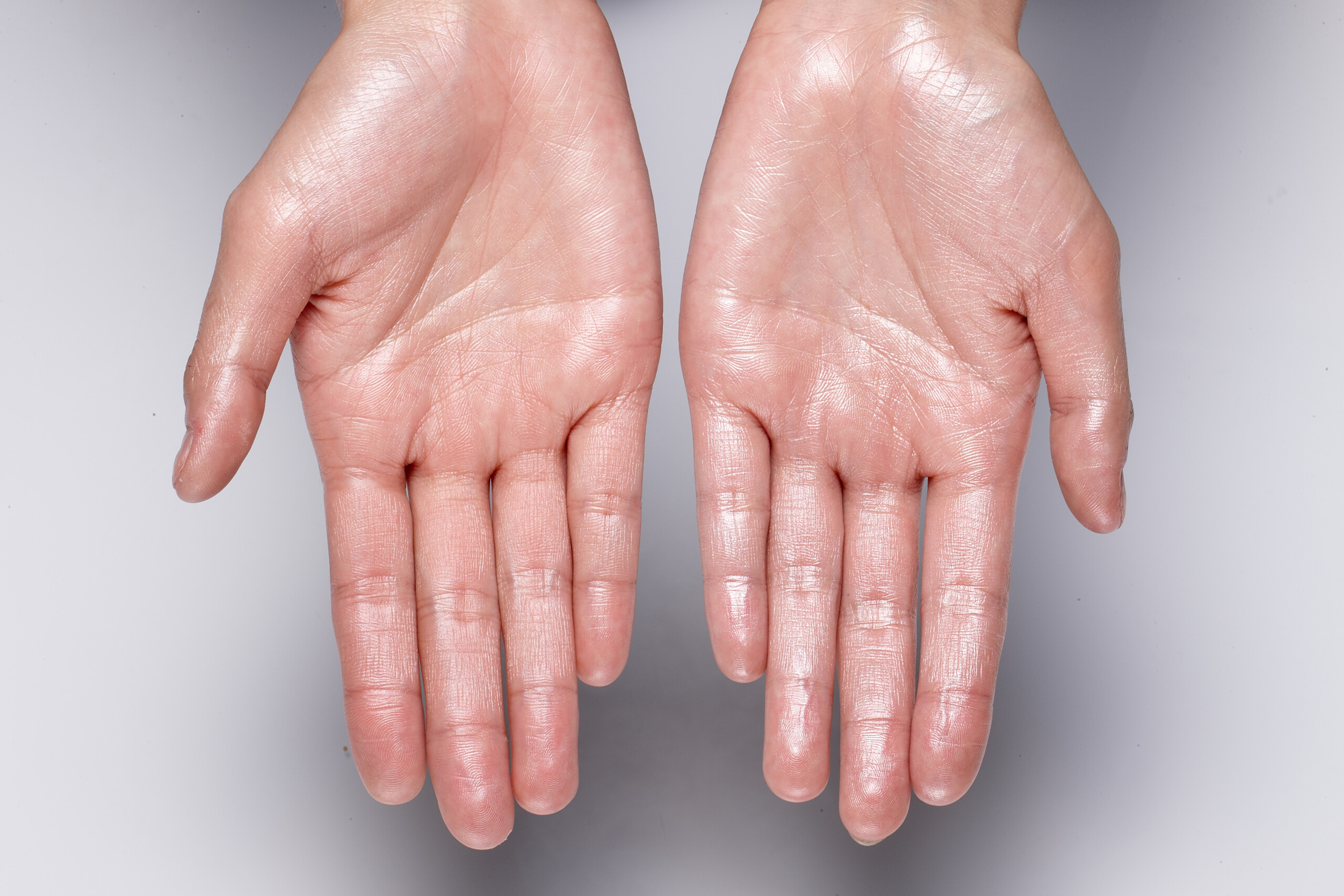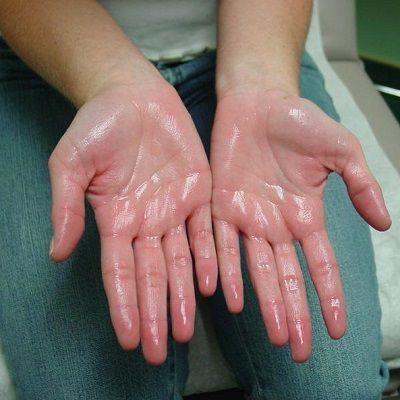Revealing the Complexities of Excessive Sweating: A Comprehensive Overview to Medical Diagnosis and Administration
Excessive sweating, medically understood as hyperhidrosis, is a problem that impacts a considerable number of individuals and can have a profound effect on their high quality of life. While sweating is a natural bodily function, its overactivity in hyperhidrosis presents an one-of-a-kind collection of obstacles that often go past plain discomfort.

Comprehending Hyperhidrosis Causes
Hyperhidrosis triggers can be connected to various aspects such as genes, hormonal inequalities, and certain medical problems. Genes play a substantial duty in primary focal hyperhidrosis, where people acquire the condition from their household members. By determining the details factors contributing to too much sweating, health care providers can tailor therapy strategies to resolve the underlying cause, using alleviation and improving the high quality of life for individuals influenced by hyperhidrosis.
Acknowledging Hyperhidrosis Manifestations

In addition, hyperhidrosis signs and symptoms might materialize in social and emotional distress, as individuals might feel ashamed or anxious concerning their sweating, leading to evasion of social situations (Treatment for hyperhydrosis of hands and feet). In addition, duplicated episodes of extreme sweating can result in skin maceration, fungal infections, and a total reduction in self-confidence
Diagnostic Refine for Hyperhidrosis
Starting the diagnostic process for extreme sweating involves thorough examination of the individual's medical background and physical assessment. Inquiring concerning the onset, duration, and sets off of sweating episodes is crucial to separate between main focal hyperhidrosis and secondary generalised hyperhidrosis. Case history must additionally consist of concerns regarding medications, medical problems, and family background of hyperhidrosis.
Throughout the checkup, certain interest is paid to the locations impacted by sweating. The doctor might assess the degree of sweating, look for signs of underlying problems, and review the effect of sweating on the individual's lifestyle. In addition, certain tests like the gravimetric test, starch-iodine test, or skin conductance measurements might be performed to measure the quantity of sweat created.
Additionally, in situations where additional hyperhidrosis is suspected, additional tests such as blood tests, urine examinations, and imaging researches may be recommended to identify the underlying root cause of excessive sweating. The diagnostic procedure intends to accurately determine the kind and reason of hyperhidrosis to lead proper monitoring approaches.
Therapy Alternatives for Hyperhidrosis
When addressing too much sweating, different treatment alternatives are offered to relieve signs and symptoms and improve the person's lifestyle. The therapy method for hyperhidrosis depends on the extent of signs and the client's response to initial treatments.
Topical treatments, such as aluminum-based antiperspirants, are typically suggested as the very first line of defense for taking care of moderate cases of hyperhidrosis. These items function by connecting the sweat ducts, hence minimizing the amount of sweat that gets to the skin's surface area. For individuals with much more severe signs and symptoms, oral medications like anticholinergics might be recommended to help reduce sweating. These drugs can have side impacts and are not ideal for everybody.

Effective Monitoring Approaches
To properly manage hyperhidrosis, a personalized and extensive treatment plan tailored to the client's particular needs and response to previous treatments is essential. This plan may integrate a combination of therapeutic approaches, consisting of way of living modifications, topical treatments, dental drugs, botulinum contaminant shots, iontophoresis, and in severe cases, surgical treatments like gland removal or sympathectomy. Lifestyle alterations such as click to investigate putting on moisture-wicking clothes, utilizing antiperspirants, and practicing stress-reducing techniques can complement clinical interventions. Topical antiperspirants containing light weight aluminum chloride are commonly the first-line treatment, with stronger solutions offered for immune cases. Oral medicines like anticholinergics might be recommended for generalized hyperhidrosis. Botulinum contaminant injections are effective for focal hyperhidrosis, offering temporary relief by blocking the release of acetylcholine. Iontophoresis, including making use of a reduced electrical existing to minimize sweat gland task, can be useful for both palmoplantar and axillary hyperhidrosis. Surgical options are commonly reserved for extreme, refractory instances and need careful factor to consider of threats and benefits. A multidisciplinary technique including skin specialists, health care physicians, and, if necessary, doctors, can enhance the monitoring of hyperhidrosis.
Verdict
Finally, hyperhidrosis is a condition defined by extreme sweating, which can substantially affect an individual's quality of life. By comprehending the causes, acknowledging the signs, and going through the analysis procedure, doctor can successfully manage this condition. Treatment alternatives consist of topical drugs, dental visit this site drugs, shots, and even surgical procedures in serious situations. With appropriate diagnosis and management techniques, individuals experiencing hyperhidrosis can discover relief and improve their overall health.
Excessive sweating, clinically understood as hyperhidrosis, is a condition that influences a considerable number of people and can have an extensive effect on their high quality of best site life. By identifying the certain factors contributing to too much sweating, health care companies can tailor therapy plans to deal with the underlying cause, using relief and boosting the high quality of life for individuals impacted by hyperhidrosis.
Hyperhidrosis, defined by extreme sweating past what is essential for controling body temperature, can considerably impact a person's quality of life. Making inquiries regarding the start, duration, and causes of sweating episodes is important to distinguish in between primary focal hyperhidrosis and second generalized hyperhidrosis. Exessive Sweating.In final thought, hyperhidrosis is a condition identified by extreme sweating, which can substantially impact a person's top quality of life